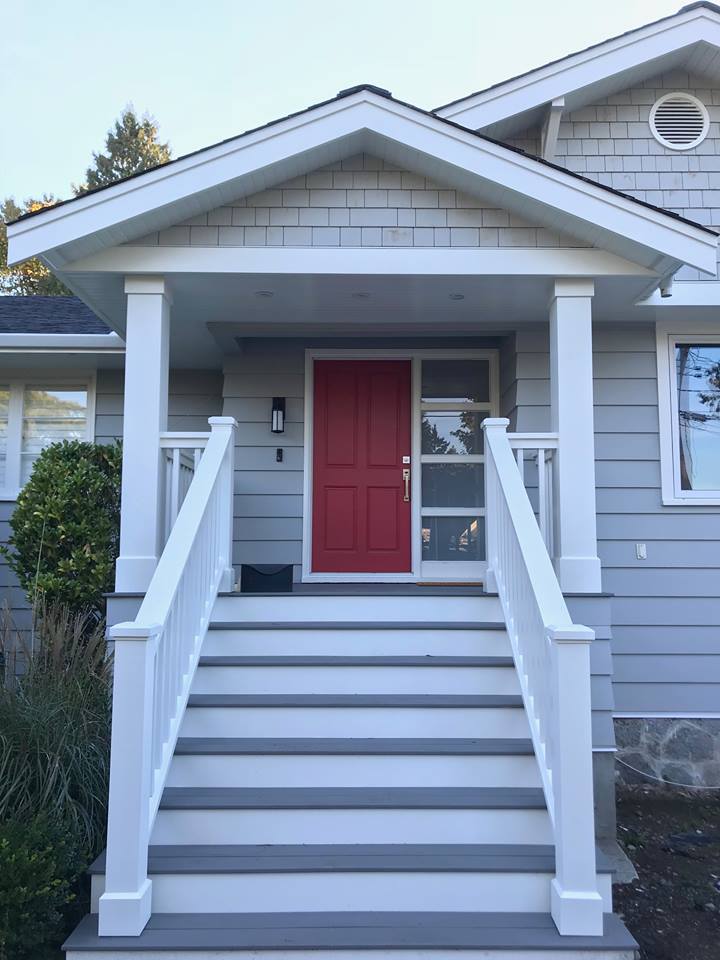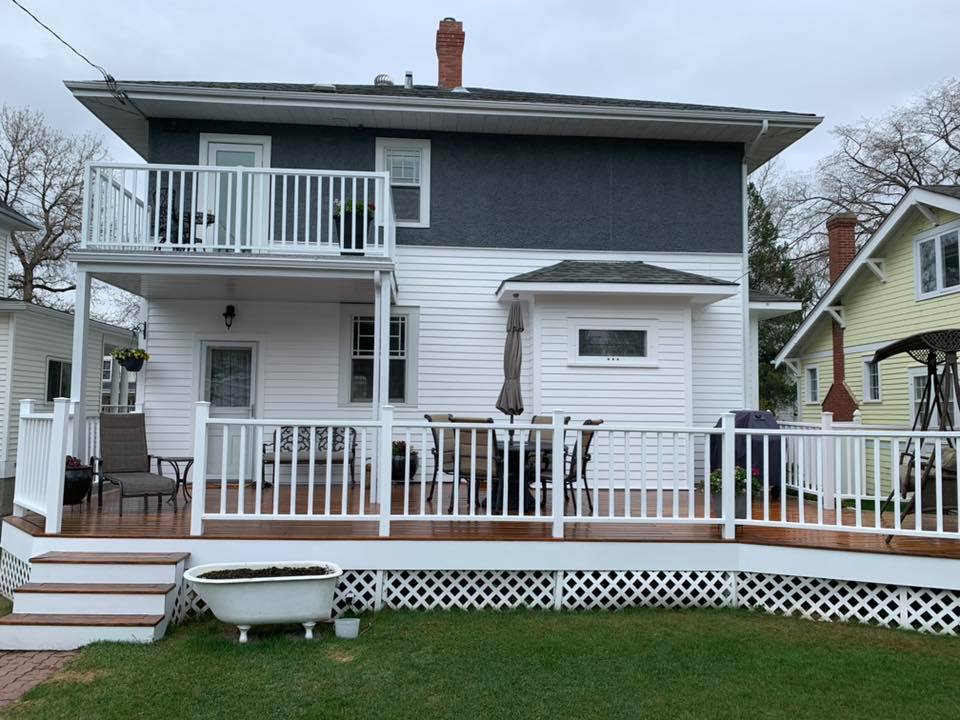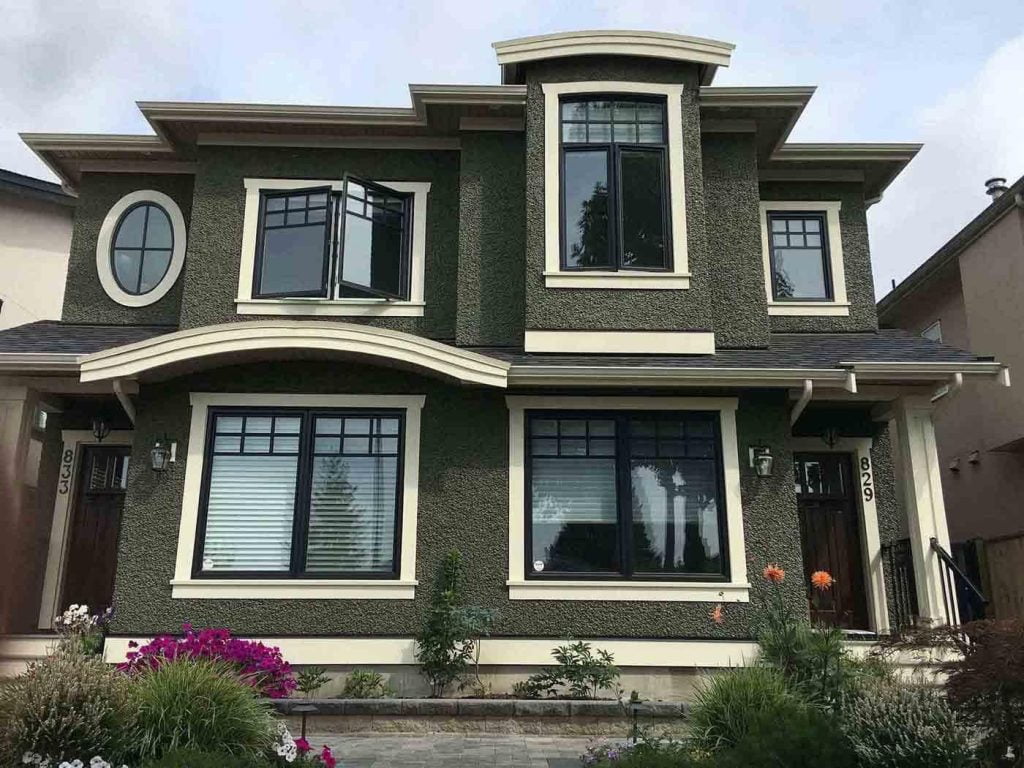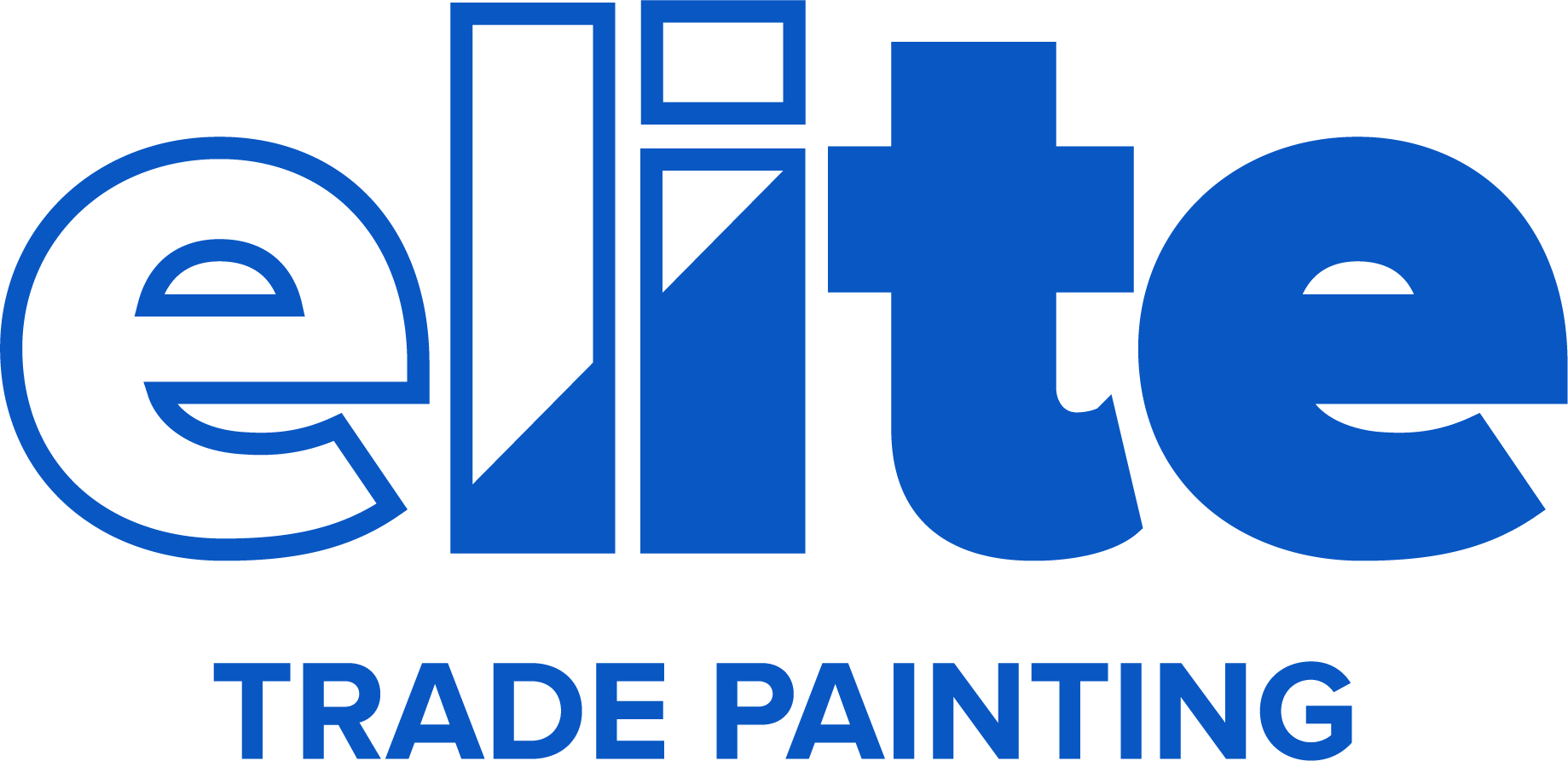
What are the Best Paints, Primers and Coatings?
We always use the best primers, paints, and coatings for your project. We use the leading Manufacturers of paint products like PPG Dulux. Using Dulux’s best brands, as well as great brands from Sherwin Williams, Benjamin Moore, and other top manufacturers, ensure our best results.
Our estimators will assess each job and provide you with recommendations on the best primers, paints, and coatings for the project. We provide you with products that will achieve the desired look and durability needed.
How we choose the best products
We begin the process of choosing the best products by looking at the current conditions of the area, understanding the desired outcome the client wishes to achieve, and looking at any underlying issues with the surface or previous coatings.
Recommendations
Once that analysis is complete, we will then recommend primers, paints, and coatings suitable for the area. This recommendation means that we select a manufacturer, a type of product, and then the brand and finish ideal for the job.
All major manufacturers have great paint.
To simplify the selection process, we recognise that all major paint manufacturers produce great products. The top three manufacturers of paint are Dulux PPG Paints, Sherwin Williams and Benjamin Moore.
They all have excellent quality paints and coatings. Their top brands are high-quality products, and the difference between each top line is an exercise in splitting hairs. Their brands, such as Dulux’s Diamond, Weatherguard, Super Paint, Regal line, and many others, apply well, look good, and wear well.
A Guide on the Best Exterior Primers, Paints, and Coatings

Wood Siding and Shingles: Best Primers, Paints, and Stains
Most wood siding and shingles will receive a flat acrylic paint for a finish coat; although, a satin finish is a close second.
Stains for Wood Siding and Shingles
Wood siding and shingles can also have stains applied which are usually solid. Semi-transparent can also be suitable, but in most cases, due to the requirement of frequent recoats to ensure protection, it is not always a practical choice.
Other finishes, such as a semi-gloss or gloss, are available. However, they are not as aesthetically pleasing, and, in the case of rough surfaces, they will show the roughness more readily.
Primers for Wood Siding and Shingles
Self-Priming Paints and Stains
Many exterior paints are self-priming, and, for most projects, we use these products as the primers. The key with self-priming paints is that you prime the areas needed with the product prior to applying the finish coat. You must wait for the recoat time for the self-priming paint to work as a primer.
Stains are self-priming whether they are acrylic, waterborne alkyd, oil, or semi-transparent and solid products in these categories are self-priming.
Waterborne Alkyd Primer
When a primer is required, the product of choice is a waterborne alkyd. It has excellent adhesion and ease of application.
Stains, Knots and Bleedthrough
In the case where staining or adhesion is an issue a waterborne alkyd primer, Kilz or BIN, can be suitable. Tannin bleed, knots, and other stains require a heavy-duty sealing primer.
We recommend Dulux Diamond Matte and Weather Guard flat as paints for most wood shingles and siding.
We recommend WoodPride solid alkyd emulsion as a stain or most wood shingles and siding.
We recommend self-priming paint and Expert Alkyd emulsion as an exterior primer for most wood shingles and siding.
We recommend Kilz primer for tannin bleed, knots and other stains on wood shingles and siding.
What are the Best Finish Coats for Trim (trim boards, door frames and windows)?

Trim (trim boards, door frames and windows) will receive a semi-gloss acrylic paint for a finish coat although a satin finish can work too.
Stains on Trim (trim boards, door frames and windows).
Trim (trim boards, door frames and windows) can also have stains applied which is usually solid. We can also use semi-transparent, but, in most cases, due to the requirement of frequent recoats to ensure protection, it is not a popular choice.
Other finishes, such as a flat, can be suitable for trim (trim boards, door frames and windows) but provide less durability. Gloss can also be used but can accentuate rough surfaces.
Primers for trim boards, door frames and windows
Self-Priming Paints and Stains
Many exterior paints are self-priming, and, for most projects, we use these products as the primers. The key with self-priming paints is that you prime the areas needed with the product prior to applying the finish coat. You must wait for the recoat time for the self-priming paint to work as a primer.
Stains are self-priming whether they are acrylic, waterborne alkyd, oil or semi-transparent and solid products in these categories are self-priming.
Waterborne Alkyd Primer
When a primer is required, the product of choice is a waterborne alkyd. It has excellent adhesion and ease of application.
Stains, Knots and Bleedthrough
In the case where staining or adhesion is an issue a waterborne alkyd primer, Kilz or BIN, can be suitable. Tannin bleed, knots, and other stains require a heavy-duty sealing primer.
We recommend Dulux Diamond Semi-Gloss and Weather guard Semi-Gloss as paints for most Trim (trim boards, doors and windows)
We recommend WoodPride solid alkyd emulsion as a stain for Trim (trim boards, door frames and windows)
We recommend self-priming paint and Expert Alkyd emulsion as an exterior primer for Trim (trim boards, door frames and windows)
We recommend Kilz primer for tannin bleed, knots and other stains for Trim (trim boards, door frames and windows)
What are the Best Finish Coats for Doors?
The most common finish for doors is a semi-gloss acrylic paint for a finish coat; although, a satin finish can work too.
Stains on Doors
Doors can also have stains applied which are usually Semi-transparent with a coat of varnish for protection.
Other finishes, such as a flat acrylic, can be suitable for doors but provide less durability. Gloss can also be used but can accentuate rough surfaces.
Primers for Wood Doors
Self-Priming Paints and Stains
Many exterior paints are self-priming, and, for most projects, we use these products as the primers. The key with self-priming paints is that you prime the areas needed with the product prior to applying the finish coat. You must wait for the recoat time for the self-priming paint to work as a primer.
Stains are self-priming whether they are acrylic, waterborne alkyd, oil or semi-transparent and solid products in these categories are self-priming.
Waterborne Alkyd Primer
When a primer is required, the product of choice is a waterborne alkyd. It has excellent adhesion and ease of application.
Stains, Knots and Bleedthrough
In the case where staining or adhesion is an issue a waterborne alkyd primer, Kilz or BIN, can be suitable. Tannin bleed, knots, and other stains require a heavy-duty sealing primer.
We recommend Dulux Diamond Semi-Gloss and Weather guard Semi-Gloss as paints for most doors
We recommend min wax gel stain for staining of doors
We recommend self-priming paint and Expert Alkyd emulsion as an exterior primer for doors
We recommend Kilz primer for tannin bleed, knots and other stains for doors
What are the Best Finish Coats Paints and Stains Vinyl siding?
Most vinyl siding and plastic will receive a high-quality, satin, acrylic paint for a finish coat.
Stains for Vinyl Siding
Stains are not used on vinyl siding.
Primers for Vinyl Siding
Primers are not generally required for vinyl siding; for plastic, we can use a product such as XIM primer if required.
Self-Priming Paints
Most high-quality exterior paints are self-priming. The paints recommended for vinyl siding are self-priming, although priming is not required in the painting of most vinyl siding. Plastics are dependent upon the type of plastic but a safe procedure is to avoid self-priming products and use an XIM primer.
We recommend Sherwin Williams Resilience as a paint for vinyl siding
We recommend XIM primer for plastic
What are the Best Finish Coats Paints and Stains for Decks and Fences

Decks and fences usually have a coat of a solid waterborne alkyd stain. We can also use a semi-transparent waterborne alkyd.
Paints for Decks and Fences
Paints are not commonly used for decks and fences but can be applied. The most common paints for decks and fences when required are:
- Walked on surfaces – Porch and floor enamel
- Rails and other non walked on surfaces – Semi-gloss acrylic
- Fences – Flat acrylic
Primers for Wood Decks and Fences
Self-Priming Paints and Stains
Many exterior paints are self-priming, and, for most deck & fence painting projects, we use these products as the primers. The key with self-priming paints is that you prime the areas needed with the product prior to applying the finish coat. You must wait for the recoat time for the self-priming paint to work as a primer.
Stains are self-priming whether they are acrylic, waterborne alkyd, oil, or semi-transparent and solid products.
Waterborne Alkyd Primer
When a primer is required, the product of choice is a waterborne alkyd. It has excellent adhesion and ease of application.
Stains, Knots and Bleedthrough
In the case where staining or adhesion is an issue a waterborne alkyd primer, Kilz or BIN, can be suitable. Tannin bleed, knots, and other stains require a heavy-duty sealing primer.
We recommend WoodPride solid waterborne alkyd and semi-transparent waterborne alkyd for decks and fences
We recommend self-priming stain and paint as an exterior primer for decks and fences
We recommend Kilz primer for tannin bleed, knots and other stains on decks and fences
What are the Best Finish Coats, Paints, and Stains for Stucco?

Most stucco will receive a flat acrylic paint for a finish coat; or, a High Build elastomeric or non-elastomeric coating. Low build products are suitable for acrylic stucco.
Stains for Stucco
Stains are not suitable for stucco.
Primers for Stucco
Self-Priming Paints
Many exterior paints are self-priming, and, for most stucco painting projects, we use these products as the primers. The key with self-priming paints is that you prime the areas needed with the product prior to applying the finish coat. You must wait for the recoat time for the self-priming paint to work as a primer.
Waterborne Alkyd Primer
Waterborne alkyd primers are generally not used for stucco.
Stains, Knots and Bleedthrough
In the case where staining is an issue, a Kilz or BIN can be suitable.
We recommend Dulux Diamond Matte and Weather guard flat as paints for most stucco, for elastomeric and non-elastomeric coatings we recommend Permacrete products
We recommend self-priming paint for stucco
We recommend Kilz primer stains on stucco
What are the Best Finish Coats, Paints, and Stains for Brick and Masonry?

Most brick and masonry, when painted, will receive a flat acrylic paint for a finish coat. When staining products similar to Permacrete Colour Seal, we use WB and SW Loxon.
Primers for Brick and Masonry
Self-Priming Paints and Stains
Products used for brick and masonry are self-priming, and, for most projects, we use these products as the primers or first coats.
Waterborne Alkyd Primer
Waterborne and alkyd primers are not suitable for brick and masonry.
Stains
In the case where staining is an issue, a Kilz or BIN can be suitable.
We recommend Dulux Diamond Matte and Weather guard flat as paints for brick and masonry
We recommend Permacrete Colour Seal WB and SW Loxonfor staining of brick and masonry
We recommend the products used for a finish as self-priming primers.
We recommend Kilz primer stains on brick and masonry
What are the Best Finish Coats Paints and Primers for Aluminium Siding?
Most aluminium siding will receive a flat acrylic paint for a finish coat; although, a satin finish is an option too.
Stains for Aluminium Siding
Stains are not suitable for aluminium siding.
Primers for Aluminium Siding
Self-Priming Paints
Many exterior paints are self-priming, and, for most aluminium siding painting projects, we use these products as the primers.
100% Waterborne Acrylic Primer
This type of primer can be suitable if there are adhesion concerns for the aluminium siding.
Stains
In the case where staining exists, Kilz or BIN can be suitable.
We recommend Dulux Diamond Matte and Weather guard flat as paints for most aluminium siding
We recommend self-priming paint and Pitt tech plus DTM primeras a primer for aluminium siding
We recommend Kilz primer stains on aluminium siding
What are the Best Finish Coats Paints and Stains for Metal?
Most metal surfaces will receive an industrial acrylic such as a semi-gloss Pitt Tech Plus for a finish coat; although, a satin finish is an option too.
Stains for Metal
Stains are not suitable for metal surfaces.
Primers for Metals
Self-Priming Paints
Many industrial acrylics, such as Pitt Tech plus, that are common for metal are self-priming, and, for most projects, we use these products as the primers.
100% Waterborne Acrylic Primer
This type of primer, such as Pitt tech plus DTM primer, can be suitable if there are rust or adhesion concerns on metals.
Stains
In the case where staining exists on metal, we use Pitt tech plus DTM primer as a primer.
We recommend Pitt Tech Plus semi-gloss as a paint for most metal
We recommend Pitt tech plus DTM primer as a primer for stains on metal
Varnishes and Stains best coatings
Spar Varnish
Spar varnish is an expensive varnish that is specially formulated for exterior use and is the only varnish that we use for exterior application.
Acrylic and Oil Varnish
Varnishes fall into two categories modified acrylic varnishes and the traditional oil-based varnish (where available). Most brands and manufacturers also have a range of finishes (sheens) matte, lo lustre, satin, semi-gloss, gloss and high gloss. Neither of these varnishes is recommended for exterior use as they have little UV protection.
A Guide to the Best Interior Paints and Primers

What are the Best Paints, Primers, and Coatings?
We always use the best primers, paints, and coatings for your project. We use the leading Manufacturers of paint products like PPG Dulux. Using Dulux’s best brands, as well as great brands from Sherwin Williams, Benjamin Moore, and other top manufacturers, ensure our best results.
Our estimators will assess each job and provide you with recommendations on the best primers, paints, and coatings for the project. They will provide you with products that will achieve the desired look and durability needed.
How we choose the best products?
We begin the process of choosing the best products by looking at the current conditions of the area, understanding the desired outcome the client wishes to achieve, and looking at any underlying issues with the surface or previous coatings.
Recommendations
Once that analysis is complete, we will then recommend primers, paints, and coatings suitable for the area. This recommendation means we select a manufacturer, a type of product, then the right brand and finish for the job.
All major Manufacturers have great paint.
To simplify the selection process, we recognise that all major paint manufacturers produce great products. The top three manufacturers of paint are Dulux PPG Paints, Sherwin Williams, and Benjamin Moore.
These manufacturers all have excellent quality paints and coatings. Their top brands are high-quality products and the difference between each top line is an exercise in splitting hairs. Their brands such as Dulux’s Diamond, Lifemaster, Super Paint, ProMar, Ben line, and many others apply well, look good, and wear well.
We recommend the following products:
Best Primers, Paints, and Coatings for Ceilings
Most ceilings will receive a flat latex paint for a finish coat. For a previously glossy alkyd finish or a previously unpainted stucco ceiling, a waterborne alkyd would be the right choice. In some cases, a semi-gloss is an option, especially for areas with a lot of cleaning or moisture.
Primers for ceilings consist of latex sealers and primers for new drywall. In the case where staining or adhesion is an issue, a waterborne alkyd primer, such as Kilz or BIN can be suitable.
For warehouse ceilings and structural ceilings in commercial buildings, we recommend a drywall acrylic product.
We recommend Dulux Ultra Hide Flat as a paint for most ceilings
We recommend Spray master Dry fall Flat for most warehouse and commercial ceilings
We recommend Ultra Hide Primer for most ceilings.
Best Interior Primers, Paints, and Coatings for Walls

The vast majority of residential home walls use an eggshell finish. It is a lower sheen paint that looks good and wears well. Good quality eggshell acrylic latex is our product of choice.
A semi-gloss finish is a good option, especially for areas that are high traffic and require a lot of cleaning or have moisture present.
Matte finishes are less common but provide an excellent look for the right home. You must choose a matte paint that is washable such as Diamond Matte finish.
Low lustre and satin are also available; they have different sheen levels for wearability and appearance.
Primers for ceilings consist of latex sealers and primers for new drywall. In the case where staining or adhesion is an issue a waterborne alkyd primer, Kilz or BIN can be suitable.
We recommend Dulux Lifemaster Eggshell as a paint for most interior walls
We recommend Ultra Hide Primer for most walls
Best Interior Primers, Paints, and Coatings for Trim (baseboards, doors and windows)
A semi-gloss finish is suitable for most residential trim: baseboards, doors, windows, and other wood trim. (It should also be noted that white is the most common colour for trim). Semi-gloss is a higher sheen paint that looks good and wears well while not being too shiny. Semi-gloss acrylic latex is the product of choice, and, if adhesion presents as an issue, we will use the waterborne alkyd semi-gloss.
A Gloss finish can be an option, especially for areas that are high traffic and require a lot of cleaning. However, this finish is not a common choice for most homes.
Matte finishes are a little more common than gloss. They provide a softer look for trim in the right home. You must choose a matte paint that is washable such as Diamond Matte finish. Low lustre and satin finishes are also available; these have different sheen levels for wearability and look, and are functional for most residential homes.
Primers for trim consist of waterborne alkyds with most products being self-priming. In the case where adhesion is an issue, we recommend a waterborne alkyd primer. For stains and knots, Kilz or BIN is preferable.
We recommend Dulux Lifemaster Semi-gloss as a paint for most trim
We recommend Ultra Hide Primer for most trim
Best Interior Primers, Paints, and Coatings for Cabinets and Built-Ins
High-Quality Acrylics
We paint most of our cabinets and built-ins with a high-quality acrylic product; they are durable and provide excellent adhesion.
Semi-Gloss Finish
A semi-gloss acrylic finish is suitable for cabinets, built-ins, and other wood trim. Semi-gloss is a higher sheen paint that looks good and wears well while not being too shiny.
Satin Finish
A satin finish is a lower sheen than semi-gloss. This finish provides equal durability to semi-gloss with a soft sheen and is preferable for many of our clients for their cabinets and built-ins.
Matte Finish
Matte finishes are a little more common than satin or semi-gloss. They provide a flat finish look for cabinets and built-ins. You must choose a matte paint that is washable such as Diamond Matte finish.
Primers (essential for the painting of cabinets and built-ins)
We prime cabinets and built-ins to ensure better adhesion. Our preferred primers are high adhesion primers such as Kilz or BIN. Waterborne alkyds are also suitable.
We recommend Dulux Diamond Satin paint for cabinet projects
We recommend Kilz primer for cabinet painting projects
Varnishes and Stains best coatings
Varnishes fall into two categories: modified acrylic varnishes and the traditional oil-based varnish (where available). Most brands and manufacturers also have a range of finishes (sheens) matte, lo lustre, satin, semi-gloss, gloss, and high gloss.
Acrylic Varnish
The more popular acrylic varnishes are easy to use, with water clean up, and provide a hard-durable surface good enough for floors. They also have excellent adhesion.
Oil vs Acrylic Varnish
The main difference between the oil and acrylic is that oil will colour the wood, providing a darker and richer look with a coat of oil varnish. The oils, because they are harder to use, are less environmentally friendly and do not provide any significant advantage over the acrylic varnishes. These factors make oil varnishes less commonly used.
We recommend Dulux Polyurethane-Acrylic Varnish for varnishing projects.
Stain Products
There are many types of wood stains and many colours with boutique manufacturers and larger, more popular products such as Minwax and Old Masters. Stains can be oil or acrylic and can also be gel (applied by a rag) or penetrating stains (applied by a brush or rag).
Method for Staining
Staining, in general, is done on bare wooden surfaces, as they penetrate the wood itself and no barrier can exist between the stain and wood. It should be noted that some stains are suitable for non-wooden surfaces.
Condition the Wood First
Prior to the application of any stain, there should be an application of a wood conditioner to open the wood for better absorption of the applied stain. We recommend that after stain application and penetration, the excess is wiped off with a rag. (It is important to remember that you must safely store any oily rags in a sealed metal container half-filled with water).
Varnish after Staining
After completing the staining, applying a couple of coats of varnish is necessary to enhance and protect the surface.
Polyshades
Where a surface has significant discolouration, a combination of stain and urethane product, such as polyshades is recommendable for application. The use of these types of products is to enhance the colour of the surface, as well as, in some cases, change the colour of the surface. It should be noted that on large surfaces such as doors polyshades may not produce optimal results.
Staining of New Wood
New wood trim, stairs and doors can be stained; these stains come in a variety of colours. Staining is only suitable when the wood itself is a stain grade product. Staining means the application of a coat(s) of penetrating or wiping stain to the wood surface using a brush or a rag. Once the stain has dried, it is common to protect the area with a varnish. The varnish comes in a variety of sheens and is a clear product. We apply a minimum of two coats of varnish to these surfaces.
We recommend MinWax Gel Stain for staining.
What are the Best Epoxy Coatings?
Epoxy coatings have a wide variety of types and purposes. The ones we use are acrylic based and solvent-based, with most being two components while some are a single component.
Two component epoxy
Two-component epoxy consists of a base and a catalyser; these are mixed to activate the component. Two-component epoxy will have a limited timeline for application once catalysed. Once the open, or pot, Lifetime passes, the product becomes hard and is unusable.
Single-Component Epoxy
A single-component epoxy is already catalysed with no mixing needed. It can be significantly easier to use than two-component epoxy, although single-component epoxies are less durable.
Garage Floor Epoxy and Coating
The two-part solvent-based products are what we recommend for floors. These are exceptionally durable products; however, they are not resistant to hot tire pick up and need to cure before heavy usage. To avoid hot tire pick-up, a coating of PSX is needed once the epoxy is applied.
 (877) 663-5483
(877) 663-5483 (844) 333-1387
(844) 333-1387
